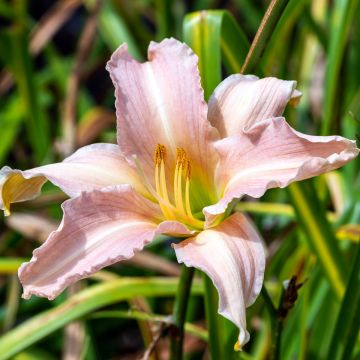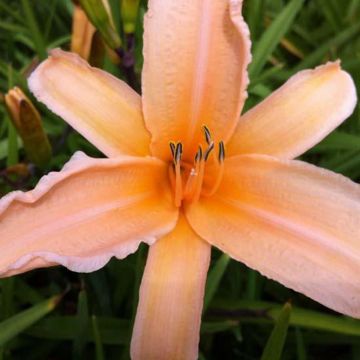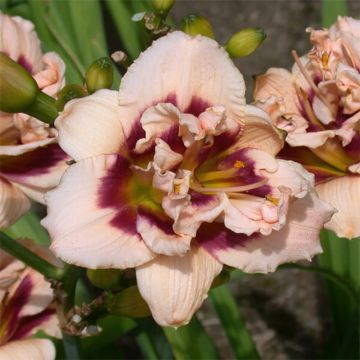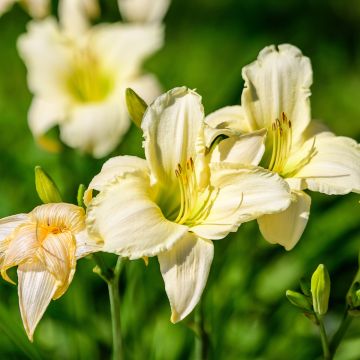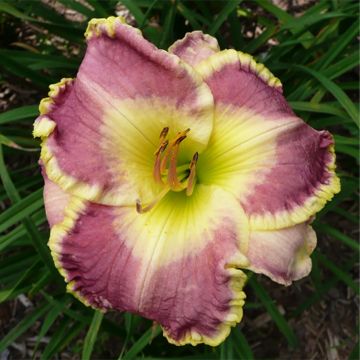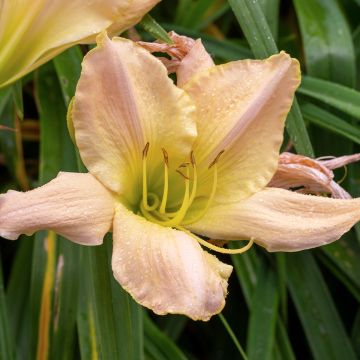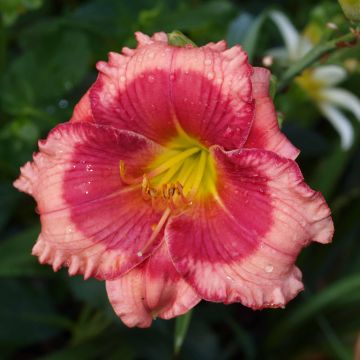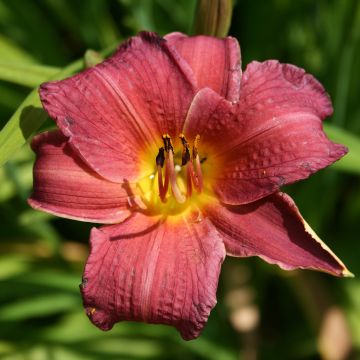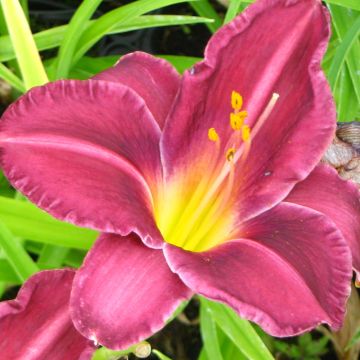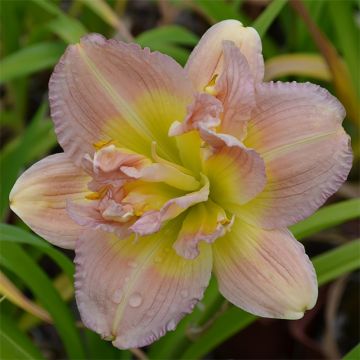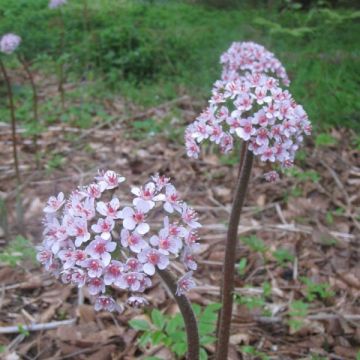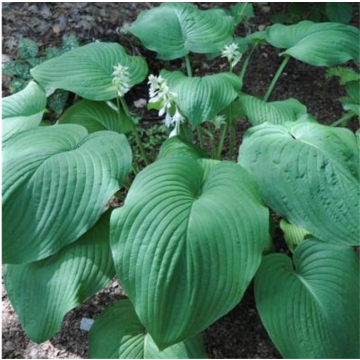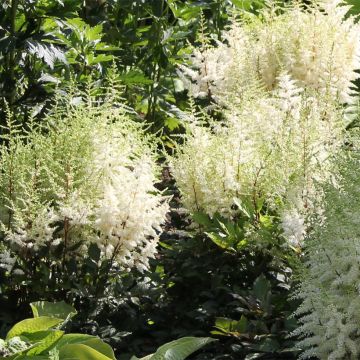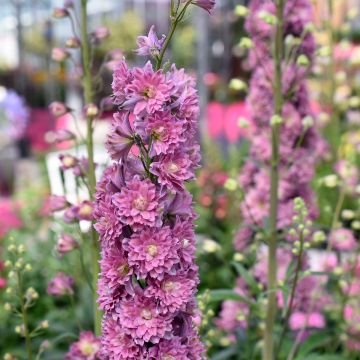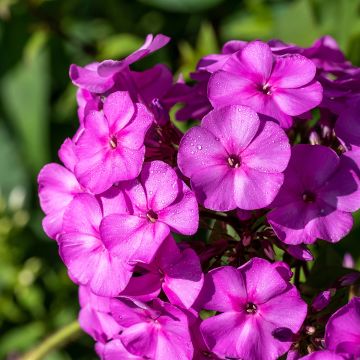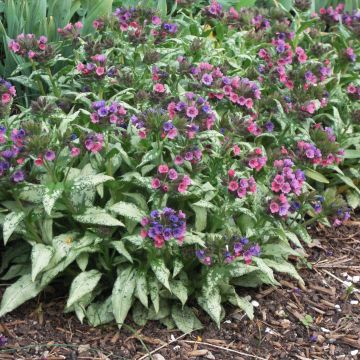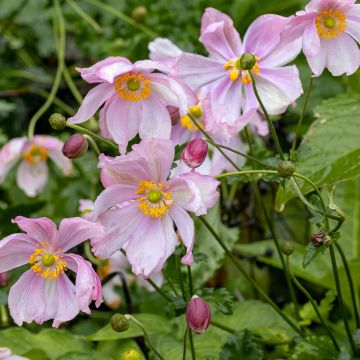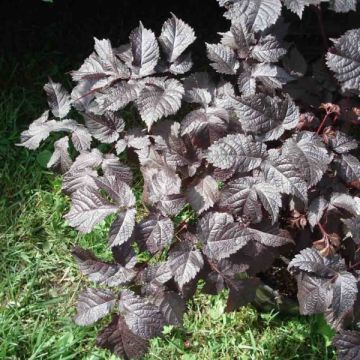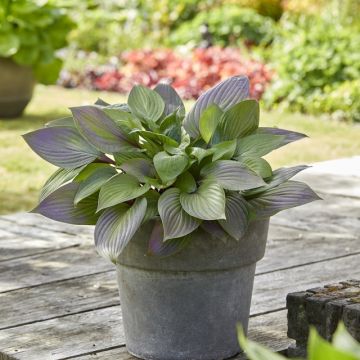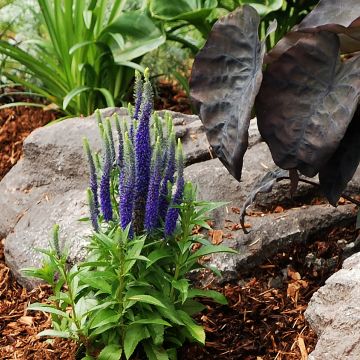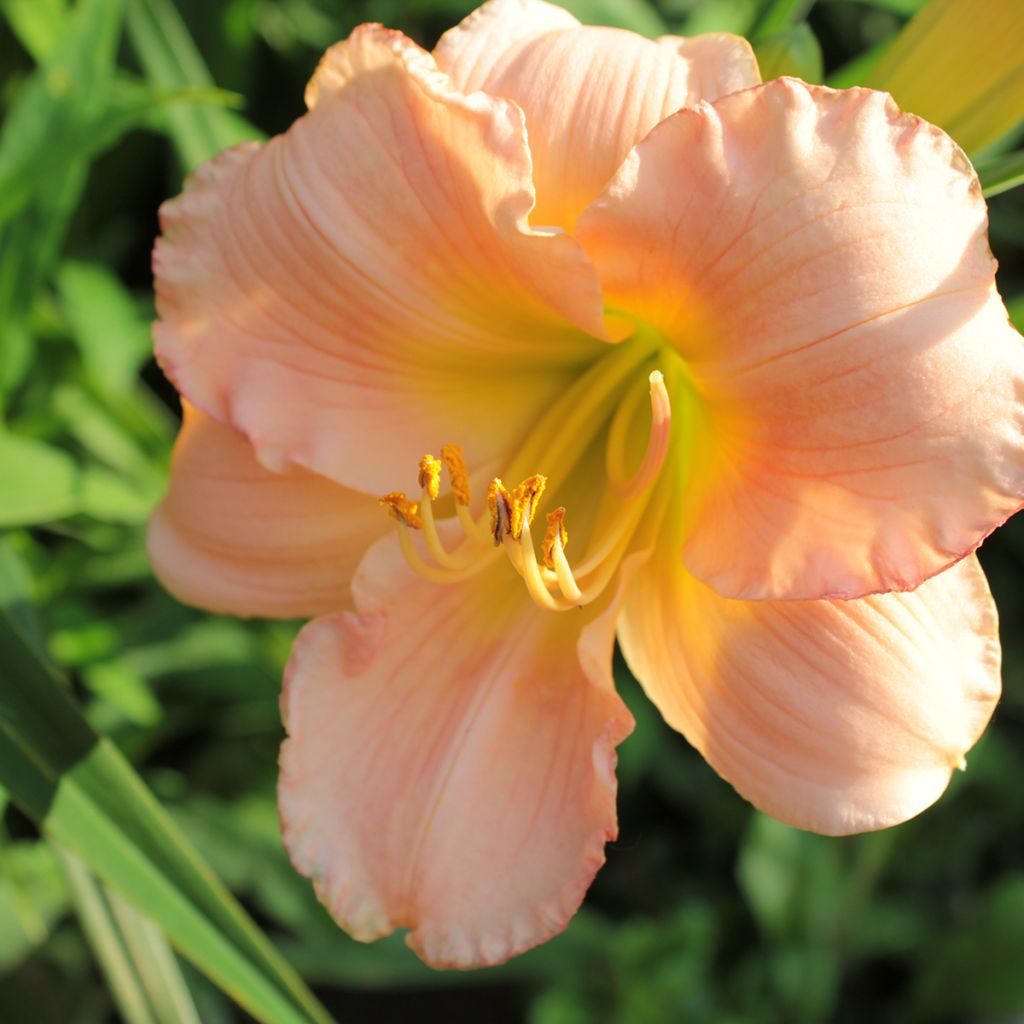

Hemerocallis On and On - Daylily
Hemerocallis On and On - Daylily
Hemerocallis On and On
Daylily
This item cannot be shipped to the selected country
Delivery charge from €5.90
Delivery charge from €5.90
Delivery to Corse prohibited
More information
Schedule delivery date,
and select date in basket
This plant carries a 12 months recovery warranty
More information
We guarantee the quality of our plants for a full growing cycle, and will replace at our expense any plant that fails to recover under normal climatic and planting conditions.
From €5.90 for pickup delivery and €6.90 for home delivery
Express home delivery from €8.90.
From €5.90 for pickup delivery and €6.90 for home delivery
Express home delivery from €8.90.
Delivery to Corse prohibited: UE law prohibits the import of this plant from mainland France to Corse as part of the fight against Xylella fastidiosa. Please accept our sincere apologies.
More information
Does this plant fit my garden?
Set up your Plantfit profile →
Description
The Daylily or Hemerocallis 'On and On', known as "Encore et Encore" in French, lives up to its name with its continuous flowering from June to September. Robust and vigorous, it produces stunning flowers with apricot pink petals and sepals with undulated edges. Its compact growth habit makes it perfect for border decoration and pot cultivation. It thrives in a sunny location and ordinary, not-too-dry soil. The deciduous foliage disappears in autumn. Over the years, the shrub expands.
According to more recent classifications, the genus Hemerocallis belongs to the Liliaceae family or the Asphodelaceae family. Hemerocallis comes from the Greek words hémera, meaning day, and kalos, meaning beautiful or good, summarizing as "Beauty of a day". They are commonly called "Daylilies" or "Perennial Lilies" because their flowers resemble those of lilies and only last for a day. They are perennial and hardy plants with deciduous or sometimes semi-evergreen foliage.
The 'On and On' daylily is a diploid hybrid variety obtained by Hardin in 1994. It grows rapidly and forms a dense, low clump, reaching a height of 30 to 40 cm (12 to 16in) with a spread of approximately 50 cm (20in). Daylilies tend to spread a bit when they are happy with their surroundings. Carried on sturdy stems, the flowers measure 10 to 12 cm (4 to 5in) in diameter. Each flower comprises three soft pink, velvety petals and sepals, with a chartreuse heart and a slightly undulated border. In the centre, six stamens stand out, each topped with a yellow anther with two lobes. Each flower only lasts for a day, but the flowering continuously flowers from June to September. The stems are strong and allow for beautiful bouquets. The linear, vibrant green foliage is abundant from April to October, then turns yellow in autumn before disappearing for the winter.
The 'On and On' daylily is a robust and generous perennial plant. It is ideal for a perennial bed's background or the shrub bed's front. Very easy to grow, daylilies thrive equally well in shade or full sun. Thanks to their short rhizome root system and fleshy roots, they establish easily in dry soils, but they will be more abundant and floriferous in moister soils. Some can be invasive, so divide the clumps every four or five years, preferably in autumn after flowering. Daylilies are often called the "perfect perennial plant" because of their vibrant colours, ability to tolerate any environment, and beautiful exuberance that blends well with other perennials. Plant them generously in the background of your flower beds. All summer flowering bulbous plants can be planted alongside daylilies.
The 'On and On' daylily pairs well with flowers in soft or pastel shades, such as mauve, blue, violet, or reddish-orange. A very colourful composition can be combined with crocosmias, gladioli, lilies, dahlias, etc. In moist soil, it can be planted near a pond alongside Iris pseudacorus, Asian primroses, astilbes, etc. For a lighter touch in a soft and harmonious bed, it can be paired with gauras, flax, bellflowers, white-flowered yarrows, and grasses like Pennisetum or Calamagrostis. With its low and compact growth habit, 'On and On' can be easily grown in containers or pots on a balcony or patio, providing sufficient and regular watering. The flowers are edible; they add colour to salads and decorate desserts.
Report an error about the product description
Flowering
Foliage
Plant habit
Botanical data
Hemerocallis
On and On
Asphodelaceae
Daylily
Cultivar or hybrid
Other Hemerocallis - Daylilies
Planting and care
To grow Hemerocallis 'On and On', plant it in good garden soil with plenty of humus and compost. This makes it more tolerant to droughts and frosts. It's easy to grow and doesn't get sick or attacked by rodents. Plant it where it gets 4 to 5 hours of sunlight each day in either partial shade or full sun. Bury the base 1 to 2 inches below the surface and don't plant them too close together. Keep the soil moist for a few weeks after planting. Divide clumps in autumn after flowering to avoid overcrowding.
Planting period
Intended location
Care
This item has not been reviewed yet - be the first to leave a review about it.
Bare-root perennials
Haven't found what you were looking for?
Hardiness is the lowest winter temperature a plant can endure without suffering serious damage or even dying. However, hardiness is affected by location (a sheltered area, such as a patio), protection (winter cover) and soil type (hardiness is improved by well-drained soil).

Photo Sharing Terms & Conditions
In order to encourage gardeners to interact and share their experiences, Promesse de fleurs offers various media enabling content to be uploaded onto its Site - in particular via the ‘Photo sharing’ module.
The User agrees to refrain from:
- Posting any content that is illegal, prejudicial, insulting, racist, inciteful to hatred, revisionist, contrary to public decency, that infringes on privacy or on the privacy rights of third parties, in particular the publicity rights of persons and goods, intellectual property rights, or the right to privacy.
- Submitting content on behalf of a third party;
- Impersonate the identity of a third party and/or publish any personal information about a third party;
In general, the User undertakes to refrain from any unethical behaviour.
All Content (in particular text, comments, files, images, photos, videos, creative works, etc.), which may be subject to property or intellectual property rights, image or other private rights, shall remain the property of the User, subject to the limited rights granted by the terms of the licence granted by Promesse de fleurs as stated below. Users are at liberty to publish or not to publish such Content on the Site, notably via the ‘Photo Sharing’ facility, and accept that this Content shall be made public and freely accessible, notably on the Internet.
Users further acknowledge, undertake to have ,and guarantee that they hold all necessary rights and permissions to publish such material on the Site, in particular with regard to the legislation in force pertaining to any privacy, property, intellectual property, image, or contractual rights, or rights of any other nature. By publishing such Content on the Site, Users acknowledge accepting full liability as publishers of the Content within the meaning of the law, and grant Promesse de fleurs, free of charge, an inclusive, worldwide licence for the said Content for the entire duration of its publication, including all reproduction, representation, up/downloading, displaying, performing, transmission, and storage rights.
Users also grant permission for their name to be linked to the Content and accept that this link may not always be made available.
By engaging in posting material, Users consent to their Content becoming automatically accessible on the Internet, in particular on other sites and/or blogs and/or web pages of the Promesse de fleurs site, including in particular social pages and the Promesse de fleurs catalogue.
Users may secure the removal of entrusted content free of charge by issuing a simple request via our contact form.
The flowering period indicated on our website applies to countries and regions located in USDA zone 8 (France, the United Kingdom, Ireland, the Netherlands, etc.)
It will vary according to where you live:
- In zones 9 to 10 (Italy, Spain, Greece, etc.), flowering will occur about 2 to 4 weeks earlier.
- In zones 6 to 7 (Germany, Poland, Slovenia, and lower mountainous regions), flowering will be delayed by 2 to 3 weeks.
- In zone 5 (Central Europe, Scandinavia), blooming will be delayed by 3 to 5 weeks.
In temperate climates, pruning of spring-flowering shrubs (forsythia, spireas, etc.) should be done just after flowering.
Pruning of summer-flowering shrubs (Indian Lilac, Perovskia, etc.) can be done in winter or spring.
In cold regions as well as with frost-sensitive plants, avoid pruning too early when severe frosts may still occur.
The planting period indicated on our website applies to countries and regions located in USDA zone 8 (France, United Kingdom, Ireland, Netherlands).
It will vary according to where you live:
- In Mediterranean zones (Marseille, Madrid, Milan, etc.), autumn and winter are the best planting periods.
- In continental zones (Strasbourg, Munich, Vienna, etc.), delay planting by 2 to 3 weeks in spring and bring it forward by 2 to 4 weeks in autumn.
- In mountainous regions (the Alps, Pyrenees, Carpathians, etc.), it is best to plant in late spring (May-June) or late summer (August-September).
The harvesting period indicated on our website applies to countries and regions in USDA zone 8 (France, England, Ireland, the Netherlands).
In colder areas (Scandinavia, Poland, Austria...) fruit and vegetable harvests are likely to be delayed by 3-4 weeks.
In warmer areas (Italy, Spain, Greece, etc.), harvesting will probably take place earlier, depending on weather conditions.
The sowing periods indicated on our website apply to countries and regions within USDA Zone 8 (France, UK, Ireland, Netherlands).
In colder areas (Scandinavia, Poland, Austria...), delay any outdoor sowing by 3-4 weeks, or sow under glass.
In warmer climes (Italy, Spain, Greece, etc.), bring outdoor sowing forward by a few weeks.

































